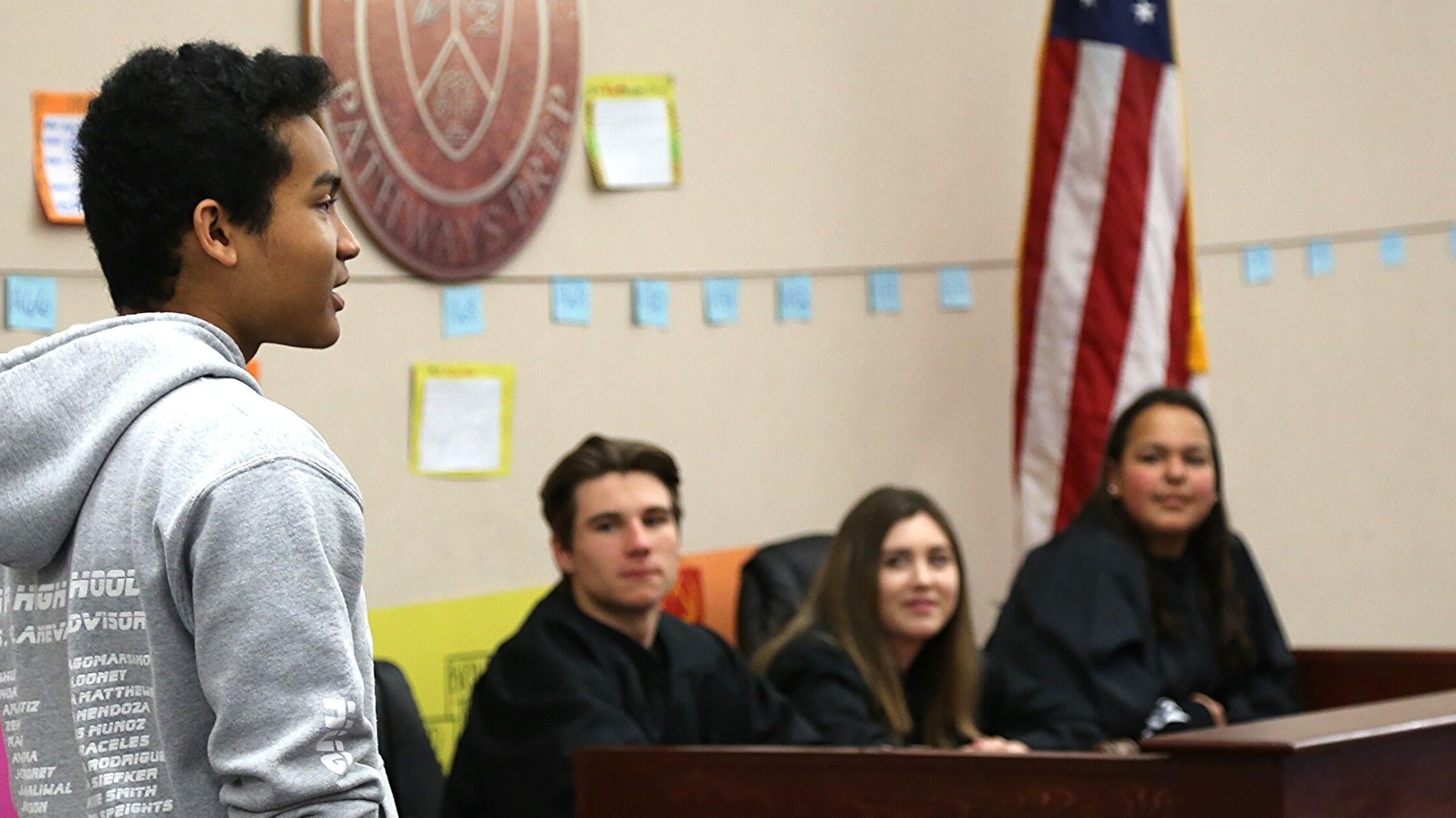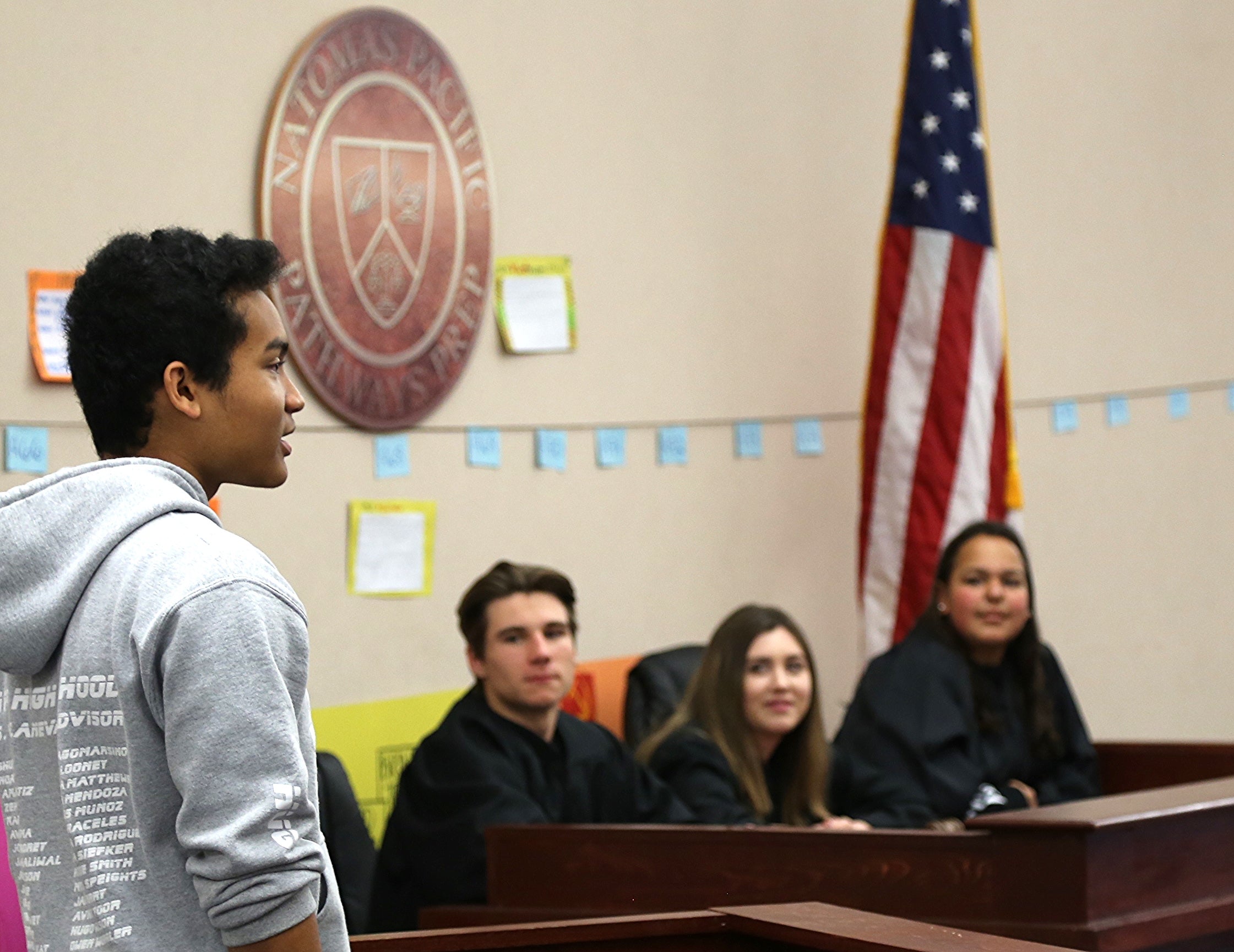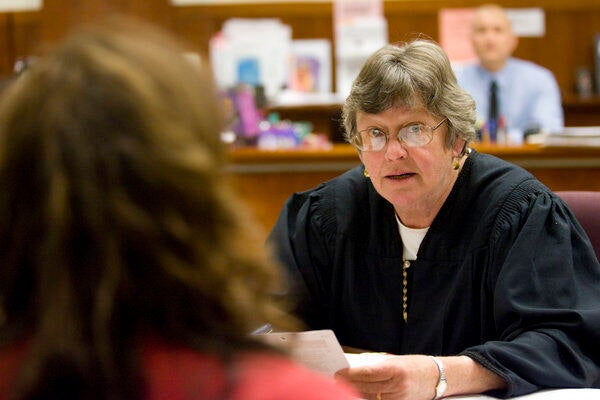
In Teen Courts, A Second Chance
In Los Angeles teen courts, crowds are standing room only and judges sit on a waitlist to preside over cases.
Here, young people—mostly first-time offenders accused of minor crimes–can avoid juvenile court by facing justice handed down by their peers.
When Los Angeles County Superior Court Judge David S. Wesley founded the first teen court in Los Angeles 25 years ago, he was unsure students would buy in. “What we soon found out was the students never stopped talking about it on campus,” Wesley said. He has since spearheaded the opening of 40 more teen courts in Los Angeles high schools that hear 1,000 cases annually, and rising.
Juvenile Incarcerations Rates on the Decline
California once disproportionately incarcerated its youth, but the rate of juveniles in custody has plummeted to its lowest level since 1960. Wesley said early intervention programs, including youth courts, have played a role.
“We catch these kids early, and it’s making a difference,” Wesley said. “We are incarcerating fewer kids, and saving millions of dollars keeping them out of the juvenile justice system.”
Good for Youth and the Court System
Statewide, there are now 75 teen courts, also called youth courts–a sharp rise since 1991 when just two were in operation.
Under a judge’s guidance, youth courts aim to repair harm to victims and the community by doling out sentences of community service, letters of apology and programs such as counseling or alcohol treatment. Former defendants must return to serve as jurors on future cases.
“They come in as a defendant and leave as a constructive community member,” said Donna Strobel of the Judicial Council Center for Families, Children & the Courts. “Youth courts are an empowering experience."

“We are diverting kids who should be diverted from the juvenile justice system–that lowers our caseload so we can focus on more serious offenders,” said retired Placer County Superior Court Judge J. Richard Couzens, who helped launch that county’s youth court in 1990.
“It holds them appropriately accountable, but it doesn’t brand them an offender for life.”
Youth Court Fosters Civic Engagement
For other students, a passion for civic involvement and the law drives them to volunteer in youth court. High school sophomore Gabrielle Battle credits her experience in Oakland’s youth court with fueling her desire to become a civil rights attorney. Among her cases: a girl who stole makeup to prepare for a piano recital.
“I understood what the pressure of those recitals felt like – what a big deal it was,” Battle said. “Ultimately, a lot of this is about people making mistakes. Sometimes it’s something they really wish they could take back.”
Participants will include successful graduates of the San Bernardino Youth Court, established in 2015 amid concerns that suspension and expulsion rates were forcing too many students out of local schools, feeding the “school-to-prison” pipeline.
In its second year, the San Bernardino court handled 128 cases that would have once sent students to the principal’s office to be suspended or expelled–or worse, to juvenile hall.
“A lot of these kids have no positive school relationship,” said court facilitator Mikki Cichocki. “We become their positive school relationship.”


